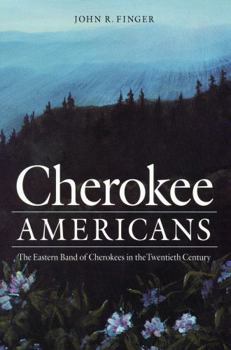Cherokee Americans: The Eastern Band of Cherokees in the Twentieth Century
Select Format
Select Condition 
Book Overview
Cherokee Americans combines . . . high-quality scholarship and eminent readability.―Choice
Much has been written about the forced removal of thousands of Cherokee Indians to present-day Oklahoma in the 1830s. Many of them died on the Trail of Tears. But until recently historians have largely ignored the tribal remnant that avoided removal and remained in North Carolina. John R. Finger shifts attention to the Eastern Band of Cherokees, descended from that remnant and now numbering almost ten thousand, most of whom live on a reservation adjacent to Great Smoky Mountains National Park. Cherokee Americans is, ironically, the first comprehensive account of the twentieth-century experience of a band that is known to and photographed by millions of tourists.
This book is a sequel to The Eastern Band of Cherokees, 1819-1900 (1984) by John R. Finger, who is a professor of history at the University of Tennessee.






